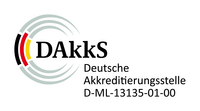Meningokokken und Haemophilus influenzae
Das NRZ für Meningokokken und Haemophilus influenzae
Das Nationale Referenzzentrum für Meningokokken und Haemophilus influenzae (NRZMHi) ergänzt mit seiner Laborsurveillance die epidemiologische Überwachung invasiver Neisseria meningitidis und Haemophilus influenzae-Infektionen in Deutschland durch das Robert Koch-Institut. Alle Isolate aus invasiven Infektionsfällen, die nach Infektionsschutzgesetz (IfSG) meldepflichtig sind, sollten auf freiwilliger Basis durch die diagnostizierenden Labore im Interesse einer möglichst vollständigen Erfassung an das NRZMHi eingesandt werden. Bei invasiven Meningokokken-Fällen können auch native Materialien zum PCR-basierten Nachweis geschickt werden.
Die Untersuchungen am NRZMHi umfassen die Speziesbestätigung, Serogruppierung, bzw. Serotypisierung und Resistenztestung der eingesandten Bakterien. Bei Meningokokken kann aus Nativmaterial die Spezies zudem auch Feintypisiert werden. Alle Meningokokken-Isolate werden zudem retrospektiv Genomsequenziert.
Zu den Aufgaben des NRZMHi gehört zudem die Beratung von behandelnden Ärzten, Mitarbeitenden im öffentlichen Gesundheitswesen und diagnostizierenden Laboren zur Identifizierung, Resistenztestung, Behandlung und zur Postexpositionsprophylaxe.
Zur Information des interessierten Fachpublikums richtet das NRZMHi seit mehr als 20 Jahren überlicherweise zweijährlich den sog. Meningokokken-Workshop aus. Es handelt sich um eine Veranstaltung in Zusammenarbeit mit dem RKI zu wichtigen Fragestellungen rund um die Epidemiologie und das Management im öffentlichen Gesundheitswesen von invasiven bakteriellen Infektionen.
Zusätzlich zu den Aufgaben im Bereich der Referenzdiagnostik führt das NRZMHi auch epidemiologische Forschungen zu invasiven Meningokokken- und H. influenzae-Infektionen durch. Weitere Informationen hierzu finden sich auf den Seiten der Arbeitsgruppe Molekulare Infektionsepidemiologie beim Institut für Hygiene und Mikrobiologie der Universität Würzburg.
Aktuelle Publikationen des NRZMHi
Duske, H., H. Claus, M. Krone and T. T. Lâm (2024). Prevalence of piperacillin/tazobactam resistance in invasive Haemophilus influenzae in Germany. JAC Antimicrob Resist 6(1): dlad148.
Goretzki, S. C., M. van der Linden, A. Itzek, ... T. T. Lâm, H. Claus and N. Bruns (2024). Outbreak of severe community-acquired bacterial infections among children in North Rhine-Westphalia (Germany), October to December 2022. Infection 2024 Jun;52(3):1099-1111.
Shaw, D., R. Abad, Z. Amin-Chowdhury, ... H. Claus, ... T.-T. Lâm, ... and A. B. Brueggemann (2023). Trends in invasive bacterial diseases during the first 2 years of the COVID-19 pandemic: analyses of prospective surveillance data from 30 countries and territories in the IRIS Consortium. The Lancet Digital Health 2023 Sep;5(9):e582-e593.
Singer, R., M. Abu Sin, T. Tenenbaum, N. Toepfner, R. Berner, S. Buda, J. Schlaberg, V. Schönfeld, U. Reinacher, M. van der Linden, H. Claus, T. T. Lâm, M. Schneider, I. Noll, S. Haller and A. von Laer (2024). The Increase in Invasive Bacterial Infections With Respiratory Transmission in Germany, 2022/2023. Dtsch Arztebl Int. 2024 Feb 23;121(4):114-120.
Topaz, N., R. Tsang, A. E. Deghmane, H. Claus, T. T. Lam, D. Litt, M. P. Bajanca-Lavado, M. Perez-Vazquez, D. Vestrheim, M. Giufre, A. Van Der Ende, O. Gaillot, A. Kuch, M. McElligott, M. K. Taha and X. Wang (2022). Phylogenetic Structure and Comparative Genomics of Multi-National Invasive Haemophilus influenzae Serotype a Isolates. Front Microbiol 13: 856884.
Nürnberg, S., Claus, H., Krone, M., Vogel, U., and Lam, T.T. (2021).
Cefotaxime resistance in invasive Haemophilus influenzae isolates in Germany 2016-19: prevalence, epidemiology and relevance of PBP3 substitutions. J Antimicrob Chemother. 76(4): p. 920-929.
Prevalence data and analysis of underlying resistance mechanisms to cefotaxime resistance in invasive H. influenzae in Germany.
Brueggemann, A.B., Jansen van Rensburg, M.J., Shaw, D., McCarthy, N.D., Jolley, K.A., et al. (2021).
Changes in the incidence of invasive disease due to Streptococcus pneumoniae, Haemophilus influenzae, and Neisseria meningitidis during the COVID-19 pandemic in 26 countries and territories in the Invasive Respiratory Infection Surveillance Initiative: a prospective analysis of surveillance data. Lancet Digit Health. 3(6): p. e360-e370.
A joint surveillance project of collaborating reference laboratories from around the world coordinated by the Oxford group. Our NRL contributed of invasive menongococcal and H. influenzae data for Germany.
Takla A, Schönfeld V, Claus H, Krone M, An der Heiden M, Koch J, Vogel U, Wichmann O, Lâm TT.
Invasive Haemophilus influenzae Infections in Germany After the Introduction of Routine Childhood Immunization, 2001-2016.
Open Forum Infect Dis. 2020 Sep 18;7(10):ofaa444. doi: 10.1093/ofid/ofaa444. PMID: 33134416; PMCID: PMC7585332.
16 years of surveillance summarized in a joint paper by the RKI and the NRL. It demonstrates the significant surge of cases and the dominance of NTHi.
Willerton L, Lucidarme J, Campbell H, Caugant DA, Claus H, Jacobsson S, Ladhani SN, Mölling P, Neri A, Stefanelli P, Taha MK, Vogel U, Borrow R.
Geographically widespread invasive meningococcal disease caused by a ciprofloxacin resistant non-groupable strain of the ST-175 clonal complex.
J Infect. 2020 Oct;81(4):575-584. doi: 10.1016/j.jinf.2020.08.030. Epub 2020 Aug 25. PMID: 32858070.
A joint effort of several European NRLs coordinated by the Manchester group. Our NRL contributed valuable information of unencapsulated strains that caused cases in asylum seekers.
Krone M, Lâm TT, Claus H, Vogel U.
Recurrent invasive meningococcal infections - quantifying the risk, Germany, 2002 to 2018.
Euro Surveill. 2020 Jun;25(25):1900565. doi: 10.2807/1560-7917.ES.2020.25.25.1900565. PMID: 32613936; PMCID: PMC7331141.
Using the huge database of the NRL we could demonstrate that the risk of recurrent infection in survivors of the disease is 50-fold higher than that of the population.



